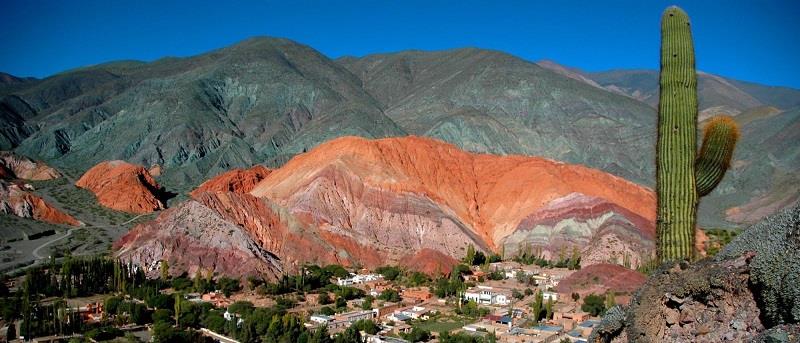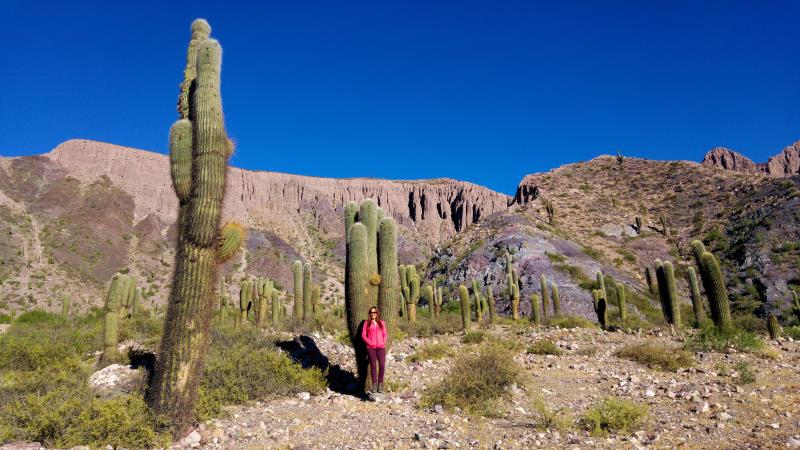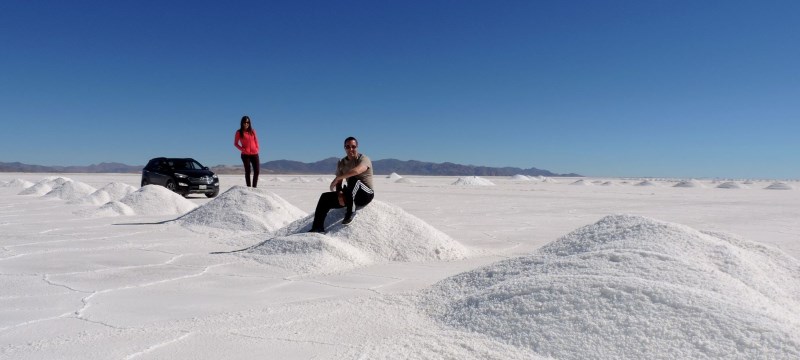A wide ranging 2 day tour of the best landscape and culture the far north of Argentina has to offer: we’ll explore the multi-coloured Quebrada de Humahuaca, famous for its 7 Coloured Hill, Hornocal with its 14 colors and also the lesser known Painter’s Palette. This is an area rich in history from pre-Inca to colonial times. We’ll cross the outer range of the Andes into the Altiplano and the wide open plains of the Salinas Grandes salt flats, with their stunning view of the mountains.
P.S. This area is now home to the highest vineyards in the world – a must-see for wine lovers
Day 1
We travel north along the old mountain road from Salta to San Salvador de Jujuy, the capital of the last province before the border with Bolivia. This gives you a taste of the verdant sub-tropical forest to the east of the Andes mountain range: a huge contrast in landscape to the wide open coloured canyon we now climb into: the UNESCO site of the Quebrada de Humahuaca.

Here, you’ll immediately sense the difference in culture from Buenos Aires and even fairly sophisticated Salta city: this is a much more indigenous and traditional area. It’s also the old Spanish Camino Real (royal road) linking Buenos Aires with Lima: we head north across the Tropic of Capricorn, to see the famous Spanish colonial artwork of Uquia’s 17th century church and visit Humahuaca itself at the head of the valley. This indigenous town, home to one of the oldest churches in northern Argentina, from 1631, has a colourful local food market: for lunch you can sample the staple Andean diet of llama, andean potatoes, quinoa and sweetcorn.

The narrow streets are packed with stalls selling local crafts, tapestries woven from lamb and llama wool, toys, chess sets and panpipes. We will then drive up into the hills above the town to see the 14 colored mountain range of Hornocal, this is a spectacular set of strata and if the light is right makes for some superb photos.
There are some very high altitude wineries in the Humahuaca Canyon and we should be able to find time to visit the new highest vineyards in the world – speak to your guide as we may need to substitute one visit for another as we already have a packed schedule. You will then spend the night in Tilcara and we will recommend a peña (traditional live music) venue for the evening.
Day 2
After breakfast we will visit the hilltop pukara (fort) of Tilcara, the home of the original indigenous settlers in pre-Inca times more than 1,000 years ago, and the 18th century colonial posta at Hornillos, a Spanish staging post along the Camino Real. Then we’ll see the famous Seven Coloured Hill at Purmamarca, taking a short walk across the river and climbing to find a perch which gives us outstanding views of the hill well away from the tourist buses.

After lunch we travel up the Cuesta de Lipan, rising 2,000m in altitude in only 30km: to a peak of 4,200m which offers superb views of the Salinas Grandes: as well as wild vicuña if we’re lucky! Then we descend to the salt flats: an immense expanse of naturally formed saline fields. We can meet the men with surely one of the toughest jobs in the world: digging salt from pits in 30 degree plus heat: and others who have traded this tough job in for a new one: carving souvenirs from salt blocks and slates. From here we return to San Salvador de Jujuy and Salta city via the sugar cane and tobacco fields.
